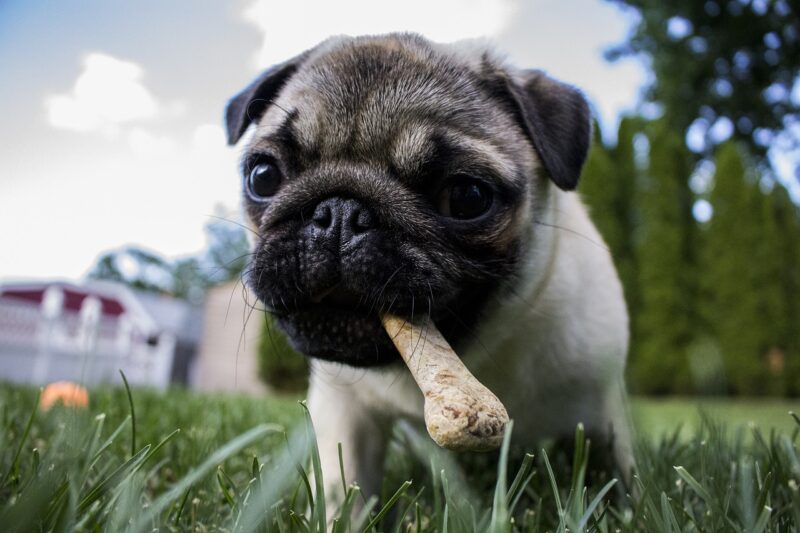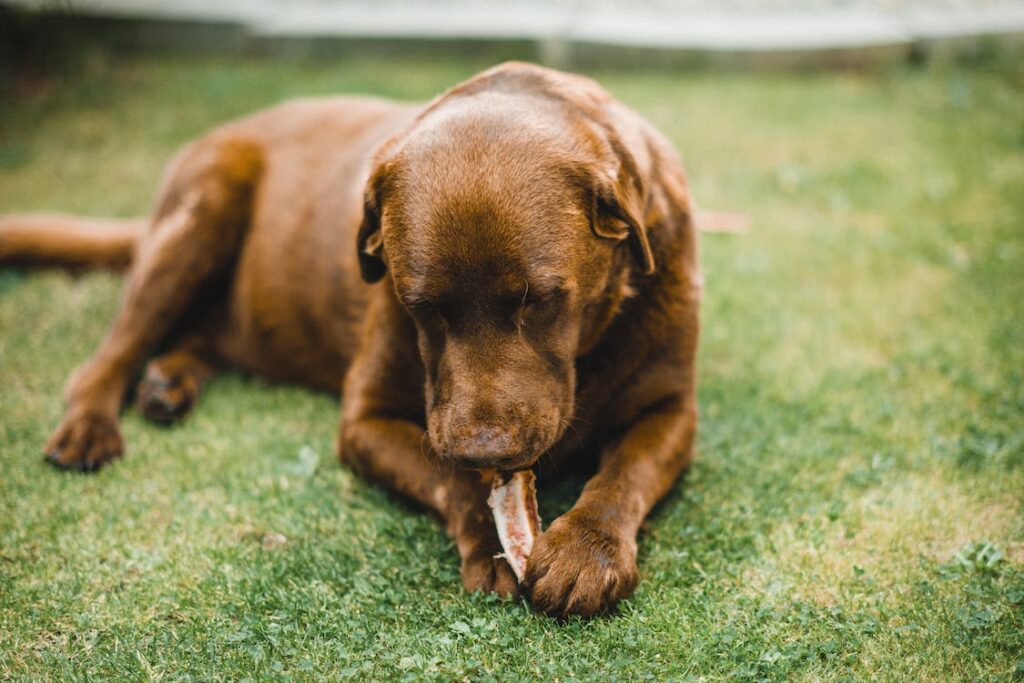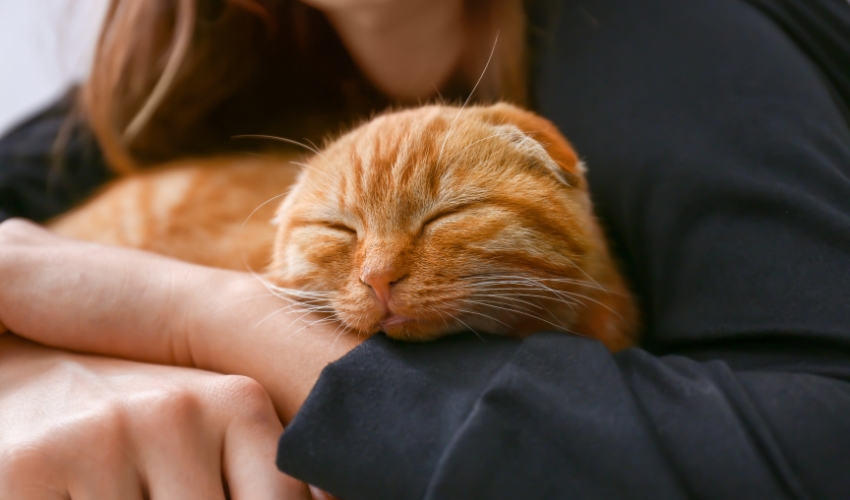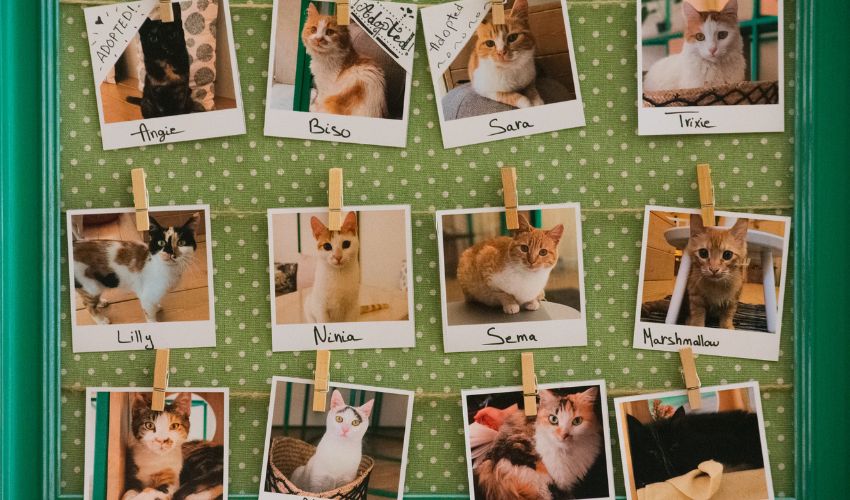In TV shows and cartoons, dogs are often portrayed gnawing on bones. Mainly because our fuzzy four-legged buddies are descendants of wolves, and in the wild, wolves and other wild animals consume bones as part of their daily natural diet. Eventually, the historical context has led many dog owners to believe that bones are a natural part of their furry friend’s diet.
According to the Advanced Care Animal Clinic, bones provide essential nutrients which contribute to their dental health and serve as a source of mental stimulation and physical exercise. Gnawing bones stimulates saliva enzymes which aid in the prevention of plaque buildup and gum diseases. It is also said that it deters them from undesirable behaviors like excessive scratching or licking. However, the question is, is it really safe for our fur babies to be gnawing on bones?
Before we can actually say yes or no, let’s dive into the benefits and potential risks of chewing or gnawing on bones.
What are the benefits of bones for dogs?
- Nutritional Value – Bones are a rich source of minerals, such as calcium and phosphorus, which are vital for maintaining strong and healthy bones and teeth for your pooch.
- Dental Health – Gnawing on bones can help clean your fur baby’s teeth by reducing plaque and tartar buildup. The mechanical action of chewing can contribute to better oral hygiene.
- Mental Stimulation – chewing on bones engages your pup’s natural instincts and provides mental stimulation, preventing boredom and destructive behavior.
- Physical Exercise – The act of chewing and gnawing on bones also serves as a form of physical exercise which promotes jaw strength and muscle development.
What are the potential risks associated with eating bones?

- Choking Hazard – Bones obviously pose a choking hazard, especially the small or brittle ones. Once swallowed, the sharp bone fragments can pierce the throat, esophagus, or even the trachea of your pooch. For larger breeds, they usually also attempt to swallow large pieces, leading to choking or blockages in the digestive tract.
- Gastrointestinal Obstruction – Sharp fragments of bones can cause tears or blockages in their digestive tracts. This can then lead to severe complications which may need surgical intervention. According to VCA Animal Hospitals, if the bone fragments travel down the gastrointestinal tract and reach the large bowel, they may collect and cause constipation. This can be painful as the bone fragments can scrape the lining of the large bowel and rectum, leading to significant trauma.
- Dental Damage – Some bones, especially the heavy ones, can be really hard and may even lead to dental fractures or other oral injuries. Not only that, the broken edges of the bones can be razor sharp. These broken fragments can pierce your fur baby’s tongue, cheek, or soft palate.
- Bacterial Contamination – Raw or undercooked bones may harbor harmful bacterias such as Salmonella or E.coli. This poses a risk of bacterial infection not only to our fur babies, but to us humans as well.
- Pancreatitis – Fatty bones can cause pancreatitis. According to the American Kennel Club, dogs aren’t built to handle high amounts of saturated fats, that is why giving them fatty bones may increase their risk of pancreatitis.
Are there any safe ways to offer my pet dog a bone?
- Choose the right type of bone – Opt for raw and meaty bones. Raw bones are less likely to splinter and cause harm. Avoid cooked bones, as they can become brittle and prone to splintering, posing a higher risk of injury.
- Supervision is key – Always supervise your dog when providing bones to ensure they are chewing safely and not attempting to swallow large pieces. Remove the bone if it becomes small enough to fit entirely in your fur baby’s mouth to prevent choking. After 10 to 15 minutes, remove the bone from your dog, place it in the refrigerator and you can give it again to them the next day. However, it is advised to discard the bone after 3 or 4 days.
- Size matters – Choose the right size of bone for your pup’s breed and size. Larger dogs may require larger and sturdier bones to prevent the risk of choking. Dr. Karen Becker, DVM., recommends picking a raw bone that is approximately the size of your dog’s head. Bones of this size will have least chances of your pooch breaking it and swallowing a chunk of bone.
- Avoid weight-bearing bones – Steer clear of weight-bearing bones, such as those from large mammals, as these can be too hard and may cause dental damage.
- Limit bone intake – Although bones can be portrayed to be part of our furry friend’s balanced diet, bones should not constitute the majority of it. Excessive consumption of bones can lead to nutritional imbalances.
- Consult with a veterinarian – Before you introduce bones into your fur baby’s diet, it’s always better to consult with your veterinarian first. Your vet can provide you with personalized advice based on your fur baby’s health, age, and specific dietary needs.

The question of whether our four-legged friend can safely eat bones can be very controversial. The decision to offer bones to your canine companion will always be up to you, but it should be approached with careful consideration of the potential risks and benefits. While there are benefits to the overall well-being of your pooch, responsible ownership involves understanding and weighing the potential hazards associated with adding bone to their diet and taking appropriate precautions. Always do your research and always consult with your vet to ensure your best FURiend’s safety.
Remember, cooked bones should always be off-limits!












